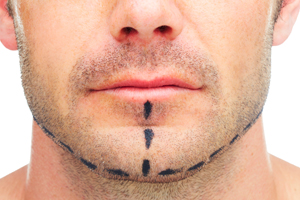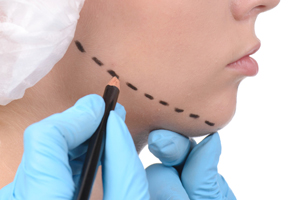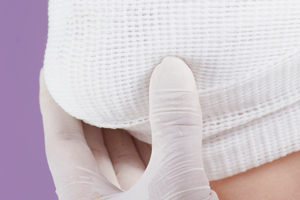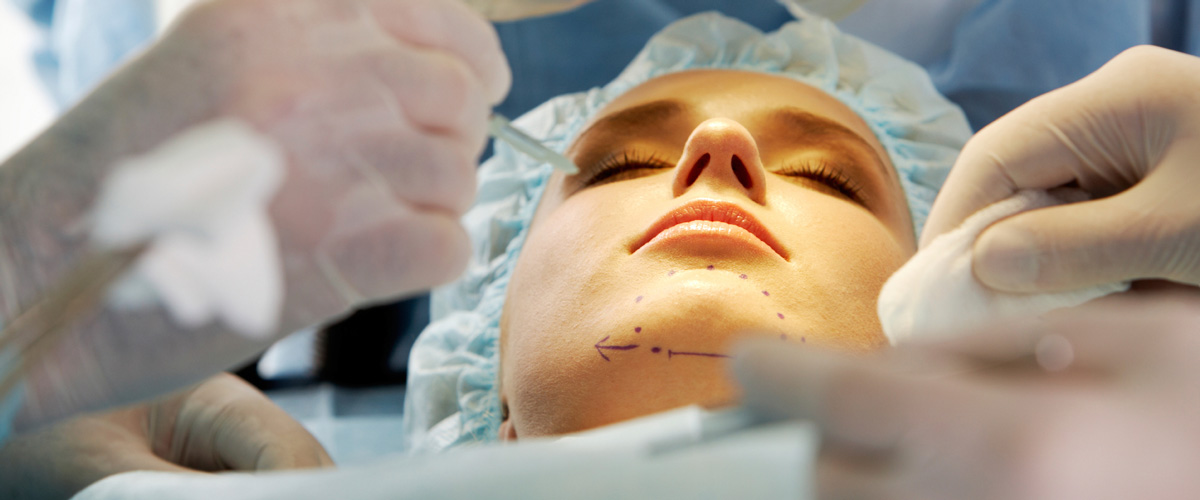What is a Chin Implant?
The shape of our face is defined somewhat by the placement of our chins. If someone is unhappy with the size of their chin or feels they need slightly more prominence at the base of their face, a chin implant may be what’s called for.
A chin augmentation, commonly known as a chin implant, is a surgery performed to change the shape of the chin, making it more prominent by inserting an implant into the area.
Chin Implant – Ideal Candidate
 Before a chin augmentation can be conducted the patient has to be identified as a potential candidate.
Before a chin augmentation can be conducted the patient has to be identified as a potential candidate.
If you are contemplating a more harmonious look to your face via a change in the look of your chin, then a chin implant could be the answer for you. This procedure is best suited to one with a chin that is small in relation to the rest of their face.
Candidates should be healthy and aware that a chin implant will not correct mental distortions that lead one to believe they look a certain way that is not generally seen by the rest of the world. It is most important that the patient be assured in their self worth and have positive self-esteem. The best candidate for a chin implant will have goals to look forward too and a healthy outlook on their face and life in general.
Chin Implants – Types
 There are varying types of implants in all shapes and sizes. Chin implants are mostly conducted with implants either made out of silicone or Gore-Tex. There are several brands of implants available to surgeons. Yours will be able to let you know the types they use and the benefits and risks of each.
There are varying types of implants in all shapes and sizes. Chin implants are mostly conducted with implants either made out of silicone or Gore-Tex. There are several brands of implants available to surgeons. Yours will be able to let you know the types they use and the benefits and risks of each.
Some surgeons use bone or cartilage from other parts of the patients body to implant into the chin area. This type of surgery has a higher risk of infection and is therefore conducted much more rarely.
If you have heard of a chin implant with wings, it doesn’t refer to anything that can fly away. It merely refers to the shape of the implant. Not all implants have wings and your doctor can help you decide the best size of implant for you.
Chin Implant – What happens during surgery
 Generally speaking there are two main ways one can conduct a chin implant. One is where the implant is placed over the chin via an incision inside the mouth where the gum meets the inner lower lip. The other is when there is a small incision made on the outside of ones neck where the crease lies between the chin and the neck.
Generally speaking there are two main ways one can conduct a chin implant. One is where the implant is placed over the chin via an incision inside the mouth where the gum meets the inner lower lip. The other is when there is a small incision made on the outside of ones neck where the crease lies between the chin and the neck.
Once the incision is made, the surgeon then stretches the skin, places the implant in place and then closes the incision. The surgery is usually completed in under two hours unless there are complications.
Patients can choose to undergo the procedure under a general anesthetic or a local anesthetic with a sedation to ease their nerves. Your doctor will be able to assist you in deciding the best option for you.
Chin Implant Recovery
 Immediately after your surgery, your chin and the bottom of your face will feel quite heavy. This feeling is similar to when you go to the dentist and your face feels swollen and heavy from the local anesthetic.
Immediately after your surgery, your chin and the bottom of your face will feel quite heavy. This feeling is similar to when you go to the dentist and your face feels swollen and heavy from the local anesthetic.
Patients will have a head wrap holding the chin area. The wrap will be removed between the second and fourth day depending on the recovery of the patient.
Your chin area will be sore. There will be bruising along the jawline as well as down the neck of the patient. The bulk of the pain will last from seven to ten days and your doctor will prescribe you medication to manage the pain. The bruising will mostly be gone by the third to fifth day. The swelling will last a little longer, but will have gone down by the end of the first week.
Stitches will be removed at around eight days after surgery.
Patients will be able to return to work within two to three weeks after surgery. This time-frame will vary for each patient. Your surgeon will inform you about the best time frame for recovery and returning to work.
Even though most of the pain, swelling and bruising will dissipate within the first ten days, the patient wont be able to see the full results of the surgery until three to four months have passed. It is normal to experience numbness in the chin for up to three months after your surgery. If you experience significant numbness past this date, it is best to consult your doctor.
 Your doctor will prescribe medication for pain and for prevention of infection. Some doctors prescribe anti swelling medications also. It is most important that you follow your doctors instructions with strictness when it comes to post operative recovery.
Your doctor will prescribe medication for pain and for prevention of infection. Some doctors prescribe anti swelling medications also. It is most important that you follow your doctors instructions with strictness when it comes to post operative recovery.
You will find it very difficult to chew, so your diet will be limited to liquids and very soft foods like smoothies, scrambled eggs and oatmeal. Your doctor will advise you on how to introduce solids slowly as you recover.
It is most important to rest with your head elevated in the first seven to ten days post surgery. Patients should refrain from making any extreme facial expressions and from putting any type of pressure on their face. It is also most important that patients do not undertake any heavy lifting and do not bend over.
Patients should also not drive for at least a week after this type of surgery.
Risks
As with any surgery there are risks involved with a chin implant. General anesthetic is always performed with the understanding that there are risks that the patient could have breathing complications.
Most cosmetic procedures also have a risk of causing permanent damage to the patients nerves. But the most common risk of having a chin implant is the possibility that the implant will move out of place. If this occurs, the patient may need to undergo another surgery to replace the implant in the correct space on the chin.
Chin Implant sizes
Chin implants come in many different sizes starting from XXS (extra extra small) to XXL (extra extra large). Your surgeon will be able to help you identify the best size of implant for your face. The more experience the surgeon has in this area, the better they will be able to choose a size that fits your face and give it moderate proportions.
Chin implant removal
Chin implants are not permanent and if the patient is unhappy with the result for any reason, it is possible to have a chin implant removed. Ideally, one would have the same surgeon remove the implant as the one who placed it in. This way, the best method of getting to the implant can be easily ascertained. The removal would be considered another surgery and will need its own healing and recovery time. Patients should make sure they take this into account.
Chin implant bone erosion
Bone erosion can be caused by the placement of certain types of implants. It is not known if the implant or its placement causes the bone erosion. Not all implants cause erosion of the bones and in fact, a lot of implants can hide the effects of natural bone erosion that occur with age. Be sure to ask your surgeon about the risks of bone erosion and whether or not they apply to you.




